Pushkar Temple / 100g 1 of 3
Pushkar Temple / 100g 2 of 3
Pushkar Temple / 100g 3 of 3
 So now we enter a larger group of incenses mostly sold in 50g packages. This is really where the Pushkar Temple Incense line finds a lot of its fantastic incenses so there are a lot of good scents to share. This is the first of six installments in this part and the first breakdown carries over from the 100g series in that this is another group of scents all titled as floras and nearly all are big step ups from the 100g floras.
So now we enter a larger group of incenses mostly sold in 50g packages. This is really where the Pushkar Temple Incense line finds a lot of its fantastic incenses so there are a lot of good scents to share. This is the first of six installments in this part and the first breakdown carries over from the 100g series in that this is another group of scents all titled as floras and nearly all are big step ups from the 100g floras.
 Baba Flora is an orange-stick variant of the Sai Flora. But where the Sai Flora was kind of unbalanced and loud, the Baba is more refined and less likely to have your sense of smell bouncing around trying to resolve conflicts. You can sense the same sort of flora mix meeting scents of citrus and blueberry, but this dials all of it down a lot. Think of it maybe as the Diet Sai Flora with all that sugar bounce reduced. Part of this moves it in a direction that is a lot harder to suss out specific scents but it’s a much friendlier incense if you don’t want to be overwhelmed, as the volume reduction has made it much sleeker and smoother. And it may just be me but this feels like there’s a little bit more musk of some sort in the mix, an ingredient that often feels like part of floras but not as obvious. It also has a bit of a spicy middle in the cinnamon/clove region, to make it a bit warmer for a flora. So there’s a feeling that around the edges it’s a little more decadent than the most obvious perfumes, yet the overall aroma is perhaps just short of distinctive to push it into a greater tier. You end up sacrificing some of the distinctiveness to get the balance.
Baba Flora is an orange-stick variant of the Sai Flora. But where the Sai Flora was kind of unbalanced and loud, the Baba is more refined and less likely to have your sense of smell bouncing around trying to resolve conflicts. You can sense the same sort of flora mix meeting scents of citrus and blueberry, but this dials all of it down a lot. Think of it maybe as the Diet Sai Flora with all that sugar bounce reduced. Part of this moves it in a direction that is a lot harder to suss out specific scents but it’s a much friendlier incense if you don’t want to be overwhelmed, as the volume reduction has made it much sleeker and smoother. And it may just be me but this feels like there’s a little bit more musk of some sort in the mix, an ingredient that often feels like part of floras but not as obvious. It also has a bit of a spicy middle in the cinnamon/clove region, to make it a bit warmer for a flora. So there’s a feeling that around the edges it’s a little more decadent than the most obvious perfumes, yet the overall aroma is perhaps just short of distinctive to push it into a greater tier. You end up sacrificing some of the distinctiveness to get the balance.
 Krishna Flora is also an orange-colored stick that looks very similar to the Baba Flora, but this is a different kind of stick indeed, much more subtle and attractive than the blaring perfume mixes usually found as floras. This is a lovely mix that seems to have something like a milder orange or neroli oil (maybe some lavender too) combined with flora aspects as well as a very subtle licorice hint (maybe occasionally) that reminds me of the heyday of great incenses (such as the old Maharaj or Maharaja stick from Mystic Temple/Incense from India). It doesn’t lose the feeling of there being some floral middle either so all of this ties into a great and complex, yet dry and not too sweet bouquet. It is however a bit air freshener, which isn’t too much of a surprise given the notes, but at least it’s not overwhelming or irritating and there are plenty of pleasant aromatics to offset it enough. Definitely recommended and I can imagine it’s a blend that might be new to your nose.
Krishna Flora is also an orange-colored stick that looks very similar to the Baba Flora, but this is a different kind of stick indeed, much more subtle and attractive than the blaring perfume mixes usually found as floras. This is a lovely mix that seems to have something like a milder orange or neroli oil (maybe some lavender too) combined with flora aspects as well as a very subtle licorice hint (maybe occasionally) that reminds me of the heyday of great incenses (such as the old Maharaj or Maharaja stick from Mystic Temple/Incense from India). It doesn’t lose the feeling of there being some floral middle either so all of this ties into a great and complex, yet dry and not too sweet bouquet. It is however a bit air freshener, which isn’t too much of a surprise given the notes, but at least it’s not overwhelming or irritating and there are plenty of pleasant aromatics to offset it enough. Definitely recommended and I can imagine it’s a blend that might be new to your nose.
 The Poonam Flora, an actual orange masala with a normal bamboo stick, is one of the line’s absolute classics. I’m so used to these orange-colored Indian masalas being saffron based, champas or otherwise, but when I used to see something similar, I would first always think of those orange cream popsicles you’d get from an ice cream truck. So now here’s a new one that looks like those and actually does smell quite like those orange cream popsicles if you can imagine those as kind of dry and more incense than summer treat. (As a side note, I’m pretty sure we dug one of these up in our Vedic Vaani research that was in one of the collections, meaning it was unlikely a reorder would be repeatable.) So this is really nothing like the other floras in the catalog, it smells almost like what orange kool-aid or drink mix powder would smell like with a slight bit of creaminess to it. Definitely has the orange citrus scent, so it makes you wonder why incense companies can never get that right in a pure charcoal. I looked Poonam Flora up on line some months back and saved this (unofficial?) description: “Yellow amber, unlike ambergris, is the result of a blend of a type of resin, vanilla and patchouli resulting in a sweet, slightly dry scent. Saffron has a spicy scent but with a leathery, even tarry side. In any case, perfumes that include saffron are certainly perfumes of character.” I don’t smell much in the way of saffron or patchouli in this although they certainly could be embedded in the mix, not to mention saffron is almost ubiquitous in orange-colored masalas, but the spice you usually get with it seems to be missing. Anyway, as you might have surmised by now, this is something of a classic, an incense style that should be much better known than it is.
The Poonam Flora, an actual orange masala with a normal bamboo stick, is one of the line’s absolute classics. I’m so used to these orange-colored Indian masalas being saffron based, champas or otherwise, but when I used to see something similar, I would first always think of those orange cream popsicles you’d get from an ice cream truck. So now here’s a new one that looks like those and actually does smell quite like those orange cream popsicles if you can imagine those as kind of dry and more incense than summer treat. (As a side note, I’m pretty sure we dug one of these up in our Vedic Vaani research that was in one of the collections, meaning it was unlikely a reorder would be repeatable.) So this is really nothing like the other floras in the catalog, it smells almost like what orange kool-aid or drink mix powder would smell like with a slight bit of creaminess to it. Definitely has the orange citrus scent, so it makes you wonder why incense companies can never get that right in a pure charcoal. I looked Poonam Flora up on line some months back and saved this (unofficial?) description: “Yellow amber, unlike ambergris, is the result of a blend of a type of resin, vanilla and patchouli resulting in a sweet, slightly dry scent. Saffron has a spicy scent but with a leathery, even tarry side. In any case, perfumes that include saffron are certainly perfumes of character.” I don’t smell much in the way of saffron or patchouli in this although they certainly could be embedded in the mix, not to mention saffron is almost ubiquitous in orange-colored masalas, but the spice you usually get with it seems to be missing. Anyway, as you might have surmised by now, this is something of a classic, an incense style that should be much better known than it is.
 Sunny Flora turns to a red-colored masala and has a wonderful sort of candy, floral bubble gum scent that pops from the fresh bundle. So this puts it fairly well in line with most red sticks that look like this except that this doesn’t really have anything in the way of rose specifically, the florals instead feel something a little less specific and much harder to pick out. I say bubble gum because some red sticks like this just have something aromatic that reminds me of gum, jawbreakers/gobstoppers, Sweet Tarts and the like (the powder that makes up drinks like Kool Aid), these are possibly all things I associate with the sugary and aromatized. Sunny Flora is definitely a very sweet mix with maybe a very small amount of fruitiness or tartness somewhere in the middle. There’s maybe a touch of cherry but compared to others of this ilk it’s kind of quieter rather than all over the scent. The whole thing is really quite Western friendly, I’d imagine if you like a quality floral this also should be on the shopping list.
Sunny Flora turns to a red-colored masala and has a wonderful sort of candy, floral bubble gum scent that pops from the fresh bundle. So this puts it fairly well in line with most red sticks that look like this except that this doesn’t really have anything in the way of rose specifically, the florals instead feel something a little less specific and much harder to pick out. I say bubble gum because some red sticks like this just have something aromatic that reminds me of gum, jawbreakers/gobstoppers, Sweet Tarts and the like (the powder that makes up drinks like Kool Aid), these are possibly all things I associate with the sugary and aromatized. Sunny Flora is definitely a very sweet mix with maybe a very small amount of fruitiness or tartness somewhere in the middle. There’s maybe a touch of cherry but compared to others of this ilk it’s kind of quieter rather than all over the scent. The whole thing is really quite Western friendly, I’d imagine if you like a quality floral this also should be on the shopping list.
Next installment we’ll move to the line’s oud/agarwood scents as well as another favorite from the line.
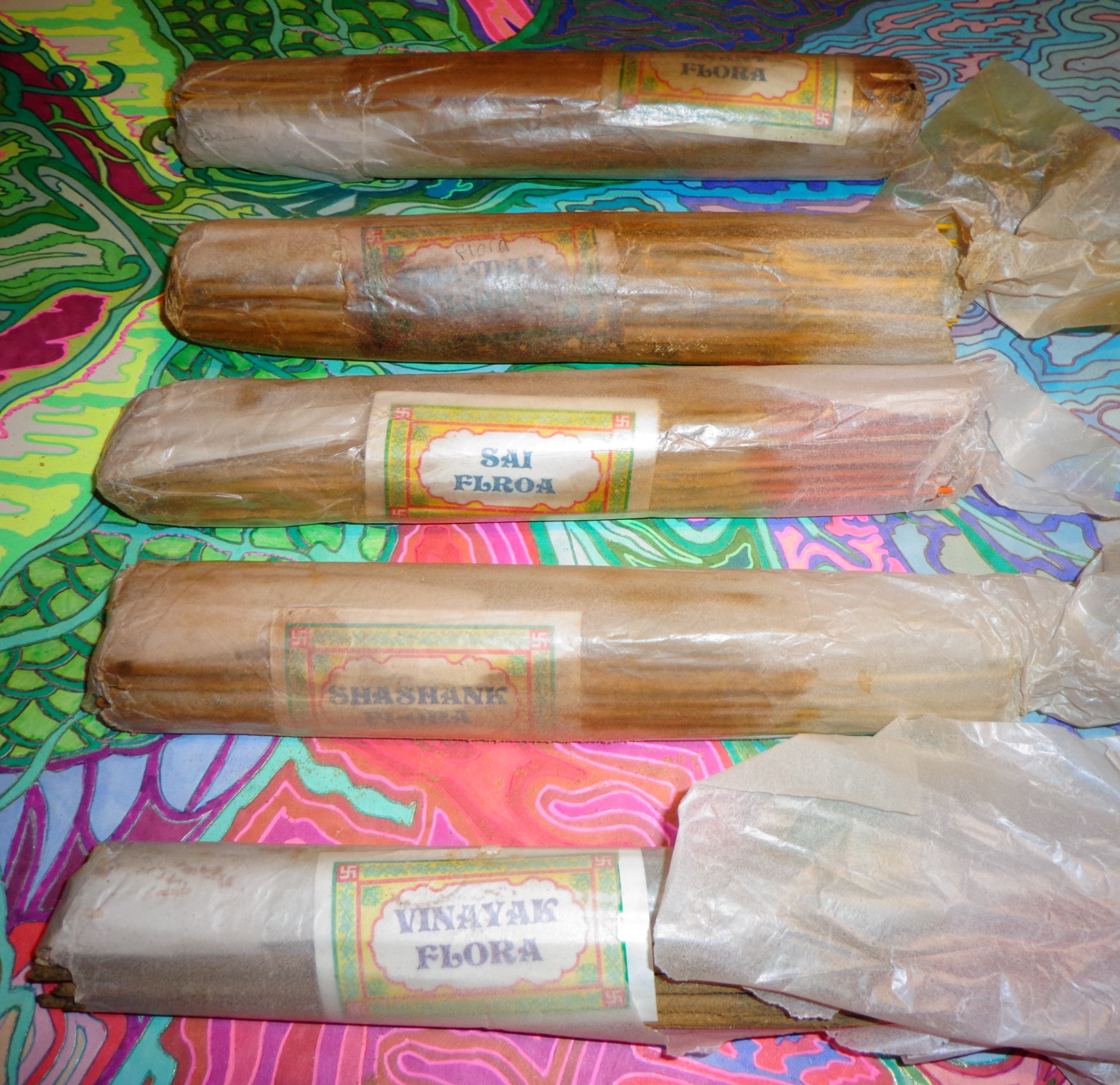 So the final group of the Pushkar Temple incenses packaged as 100g bundles are all floras. Those familiar with the style will notice they have a Sai Flora, which in many ways is the most well-known/popular flora known in Indian incense through the dark red package that shows up nearly everywhere (I used to think this was something like second in popularity to blue box Nag Champa). Many floras, even outside of PT will have orange-dipped bamboo sticks and certainly PT’s Sai Flora and a few others do as well. Floras are generally highly perfumed mixes of so many elements it is almost impossible to parse them separately in an aroma, but it’s probably safe to say they are mostly mixes of florals and often fruits.
So the final group of the Pushkar Temple incenses packaged as 100g bundles are all floras. Those familiar with the style will notice they have a Sai Flora, which in many ways is the most well-known/popular flora known in Indian incense through the dark red package that shows up nearly everywhere (I used to think this was something like second in popularity to blue box Nag Champa). Many floras, even outside of PT will have orange-dipped bamboo sticks and certainly PT’s Sai Flora and a few others do as well. Floras are generally highly perfumed mixes of so many elements it is almost impossible to parse them separately in an aroma, but it’s probably safe to say they are mostly mixes of florals and often fruits.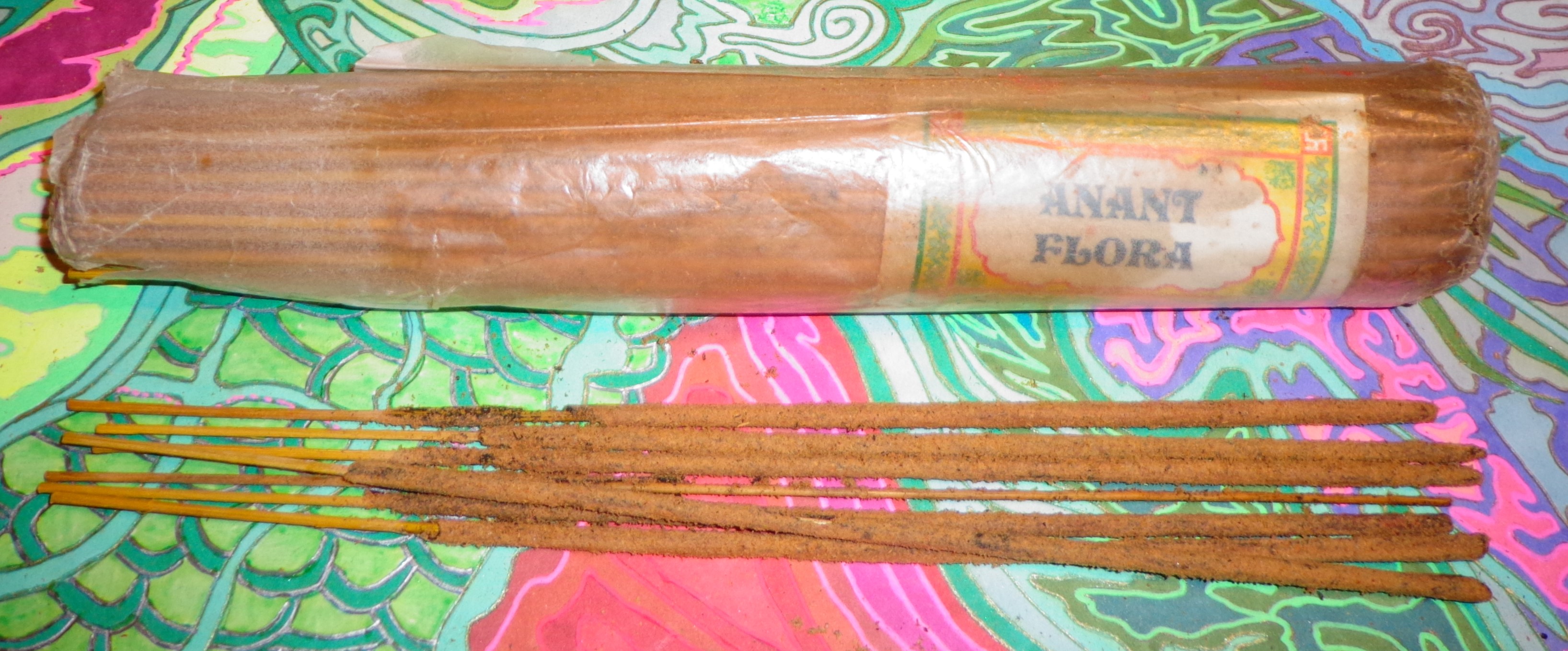
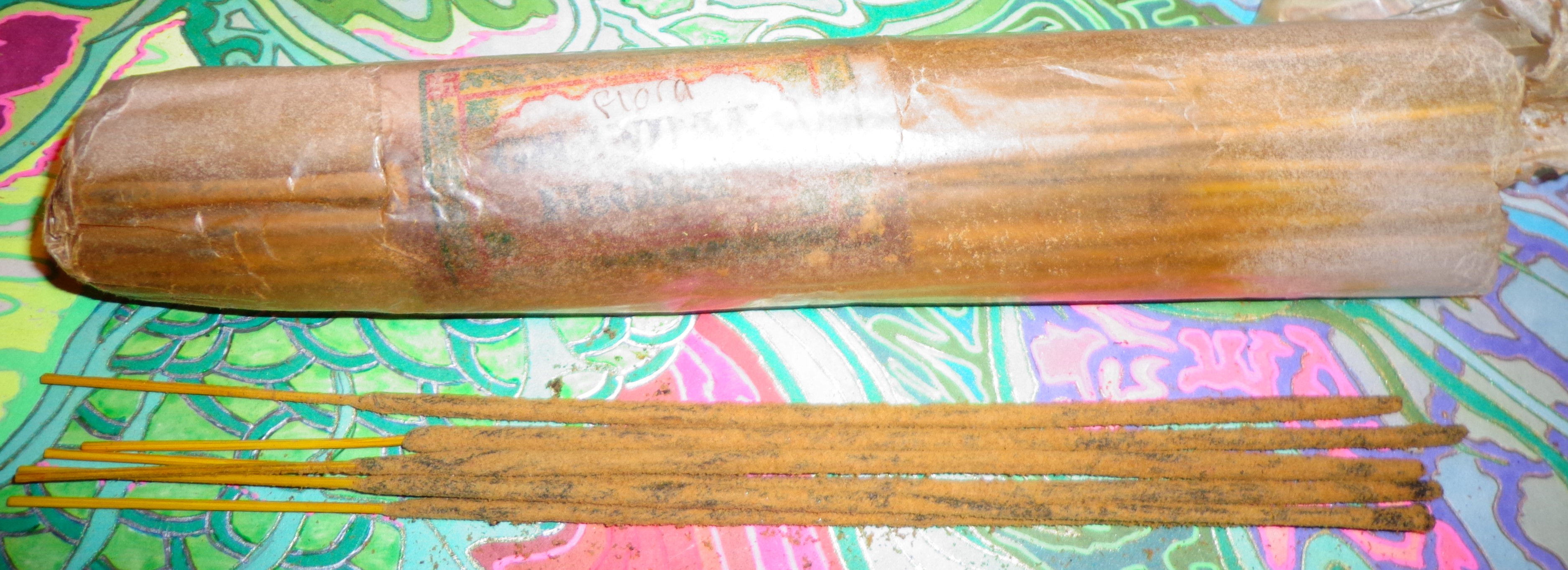 The
The 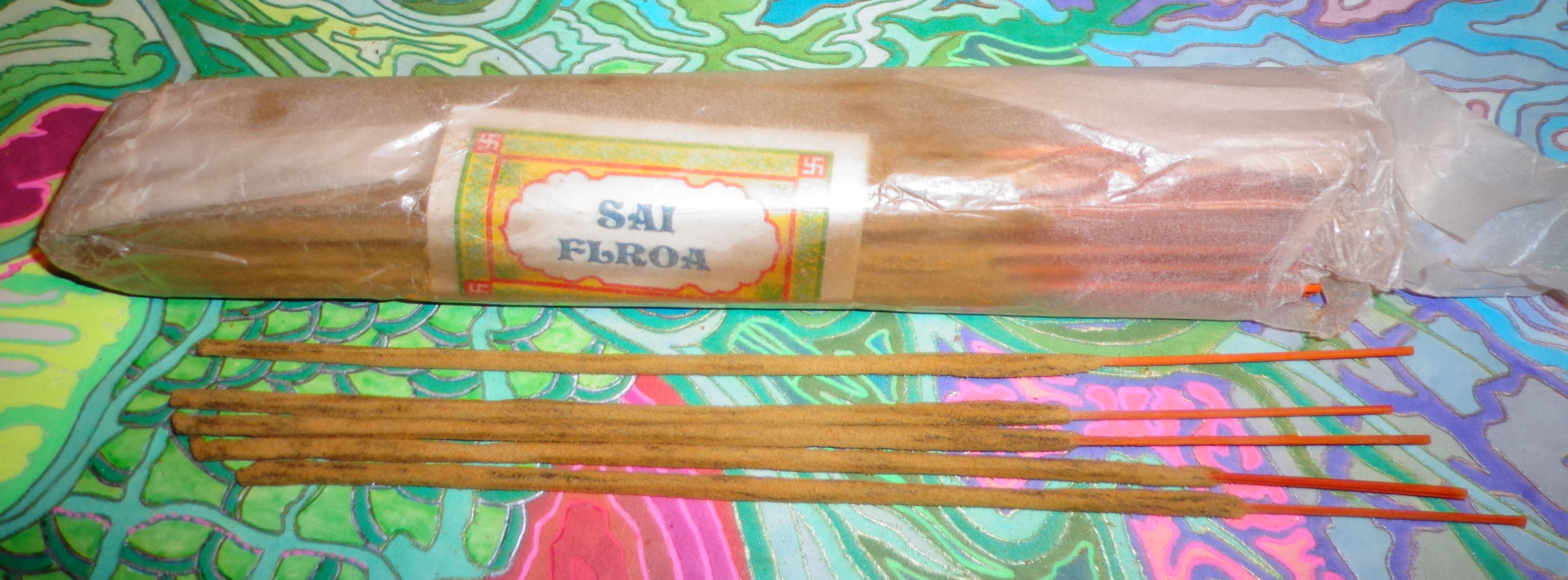 Pushkar’s
Pushkar’s 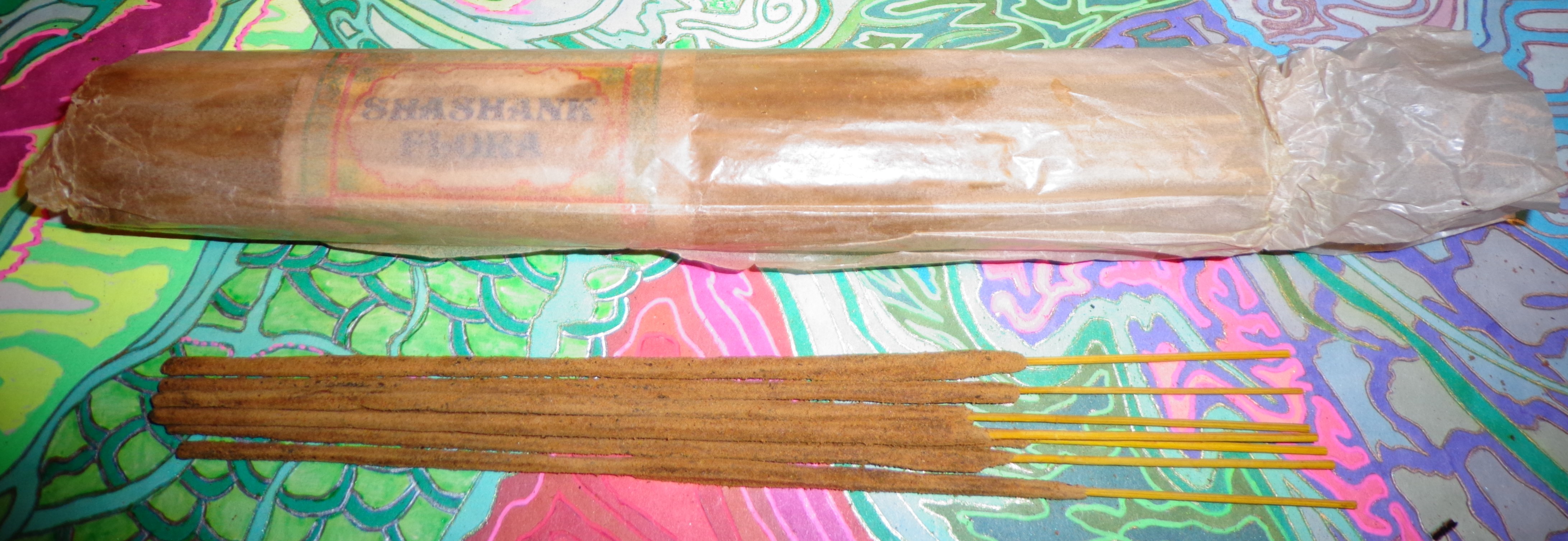 I’m not even sure I’d consider
I’m not even sure I’d consider 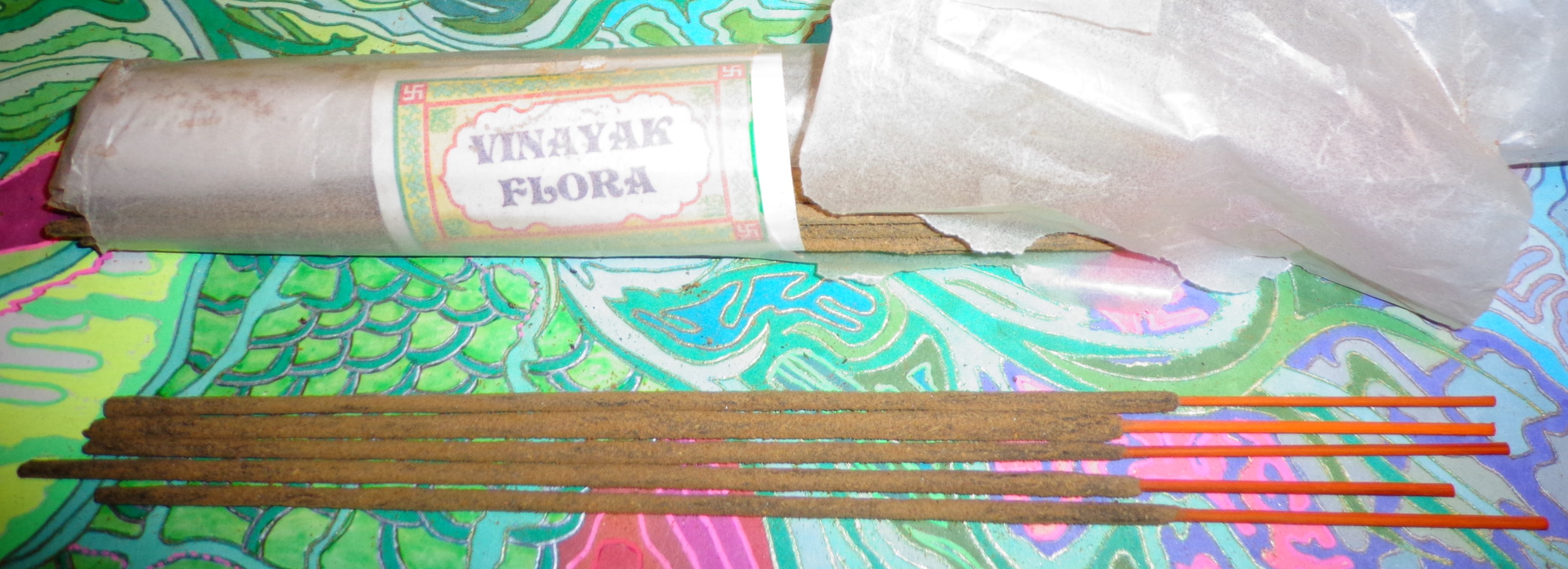 The
The 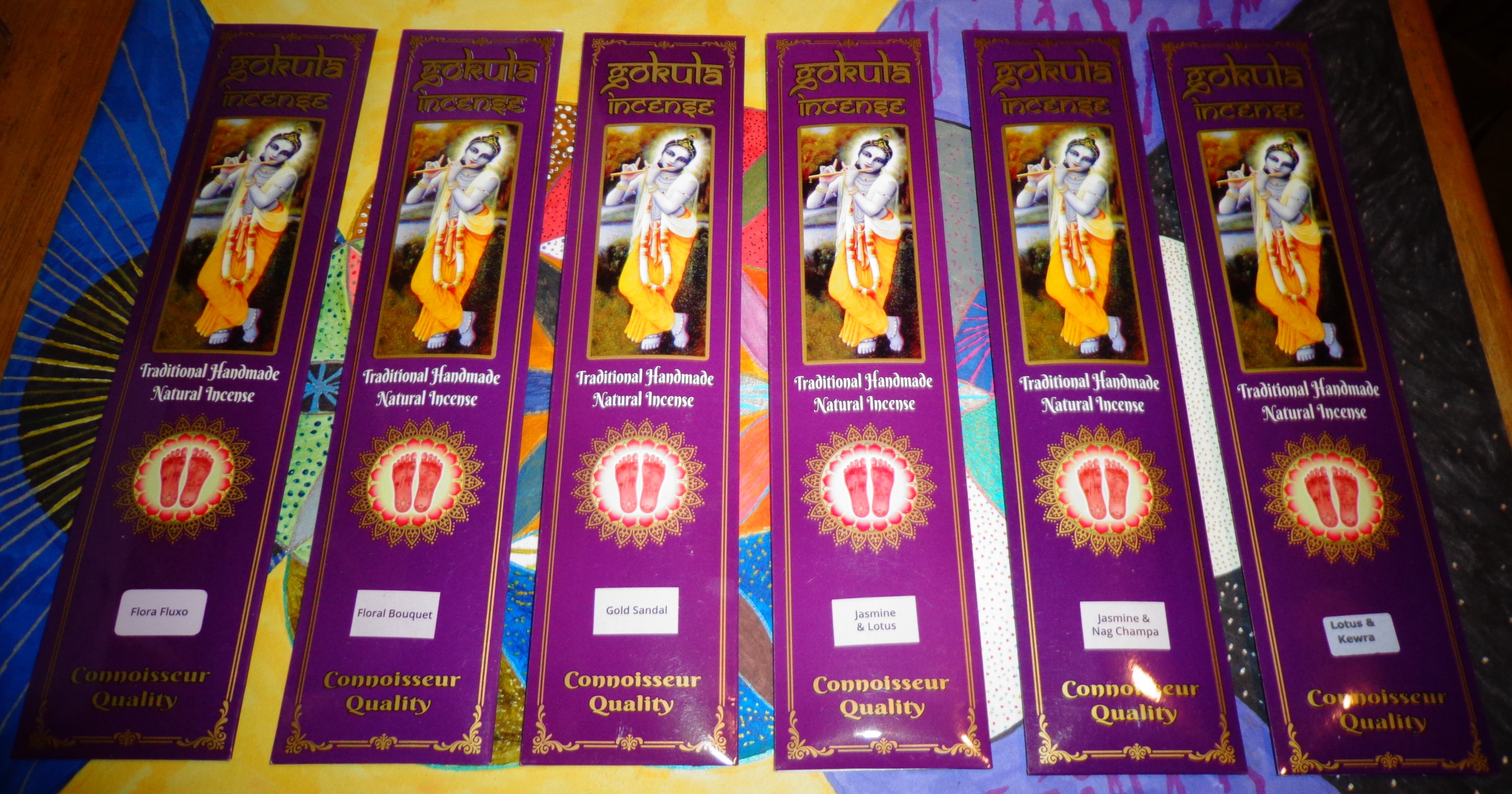 This is the second of four in a series of Gokula Incense reviews, please see the first installment for an introduction to the company.
This is the second of four in a series of Gokula Incense reviews, please see the first installment for an introduction to the company.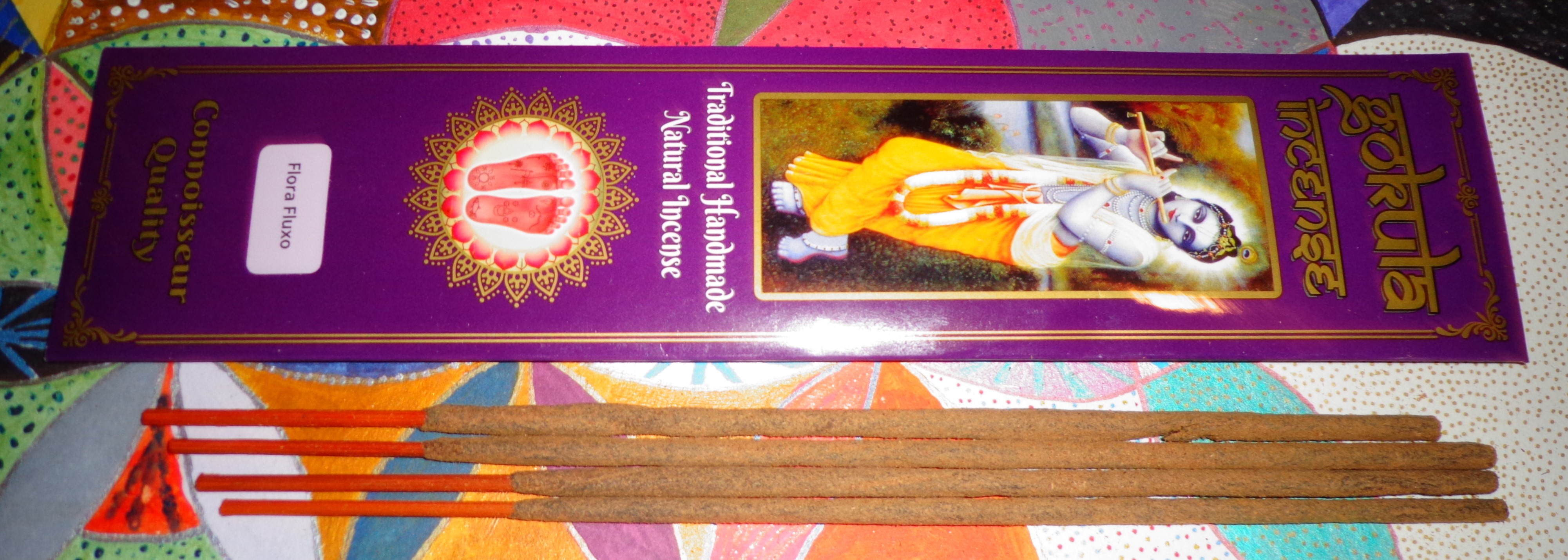 My general impression of flora/fluxo incenses is they usually come with an orange dipped stick (either full or just the end). And Gokula’s variant (one of them really) is actually called
My general impression of flora/fluxo incenses is they usually come with an orange dipped stick (either full or just the end). And Gokula’s variant (one of them really) is actually called 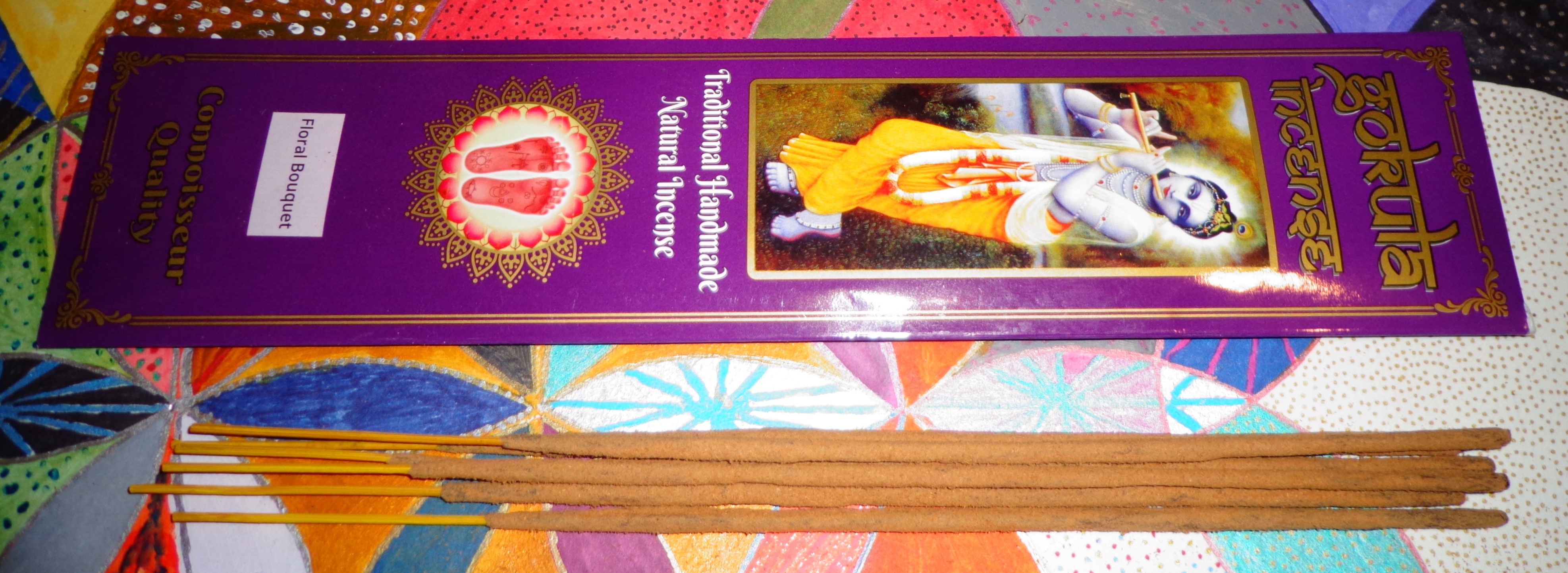
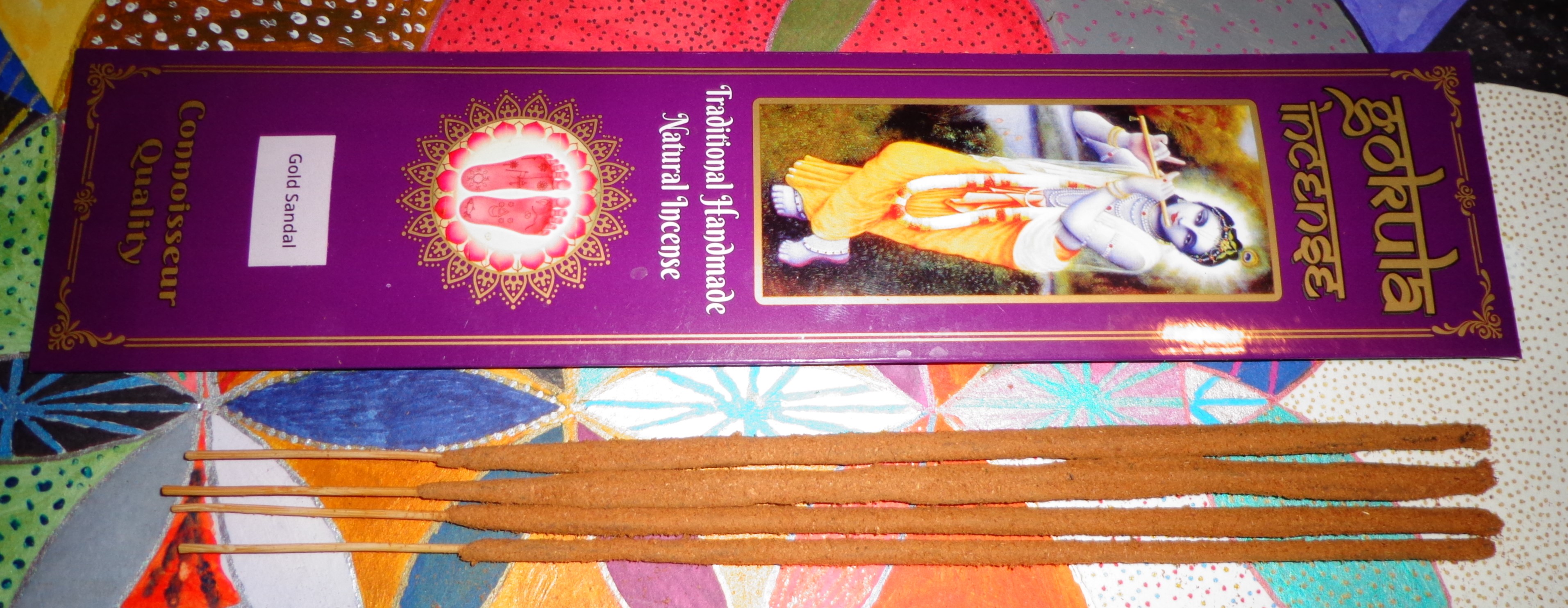
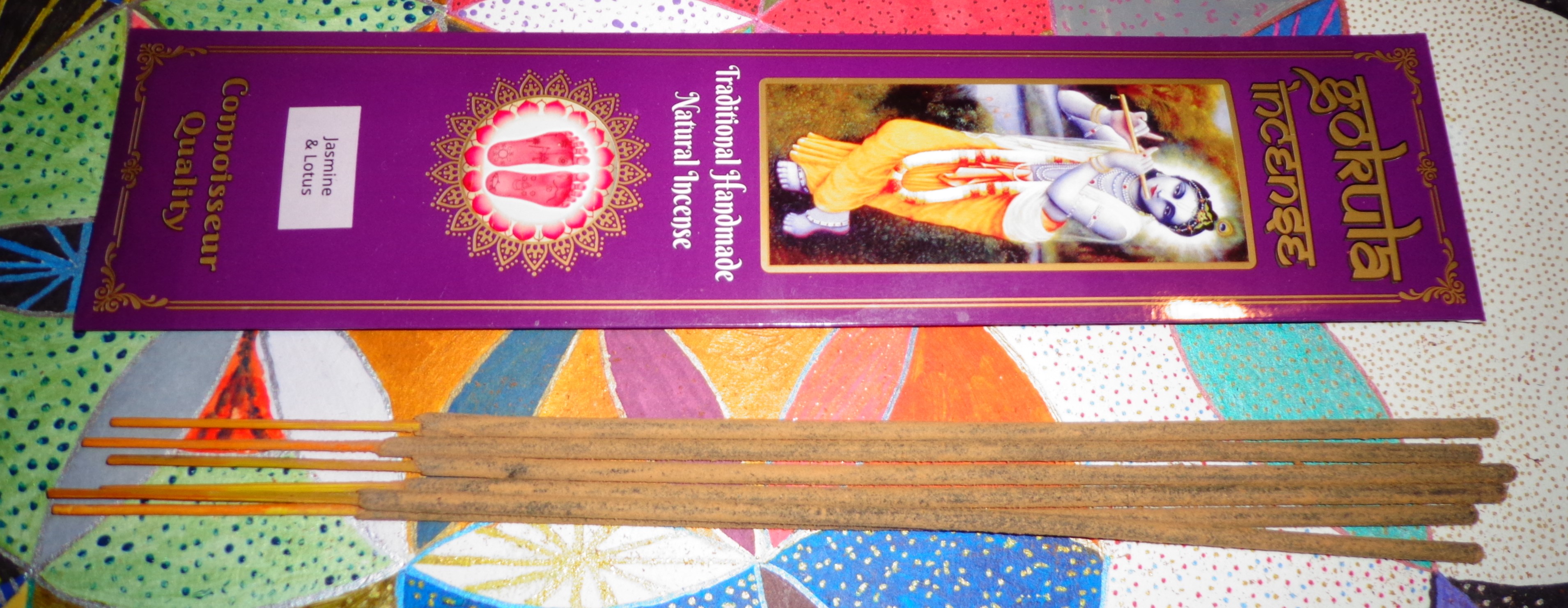 Even though I am going in alphabetical order, the next three incenses share quite a few of the same ingredients and operate very closely in style. The
Even though I am going in alphabetical order, the next three incenses share quite a few of the same ingredients and operate very closely in style. The 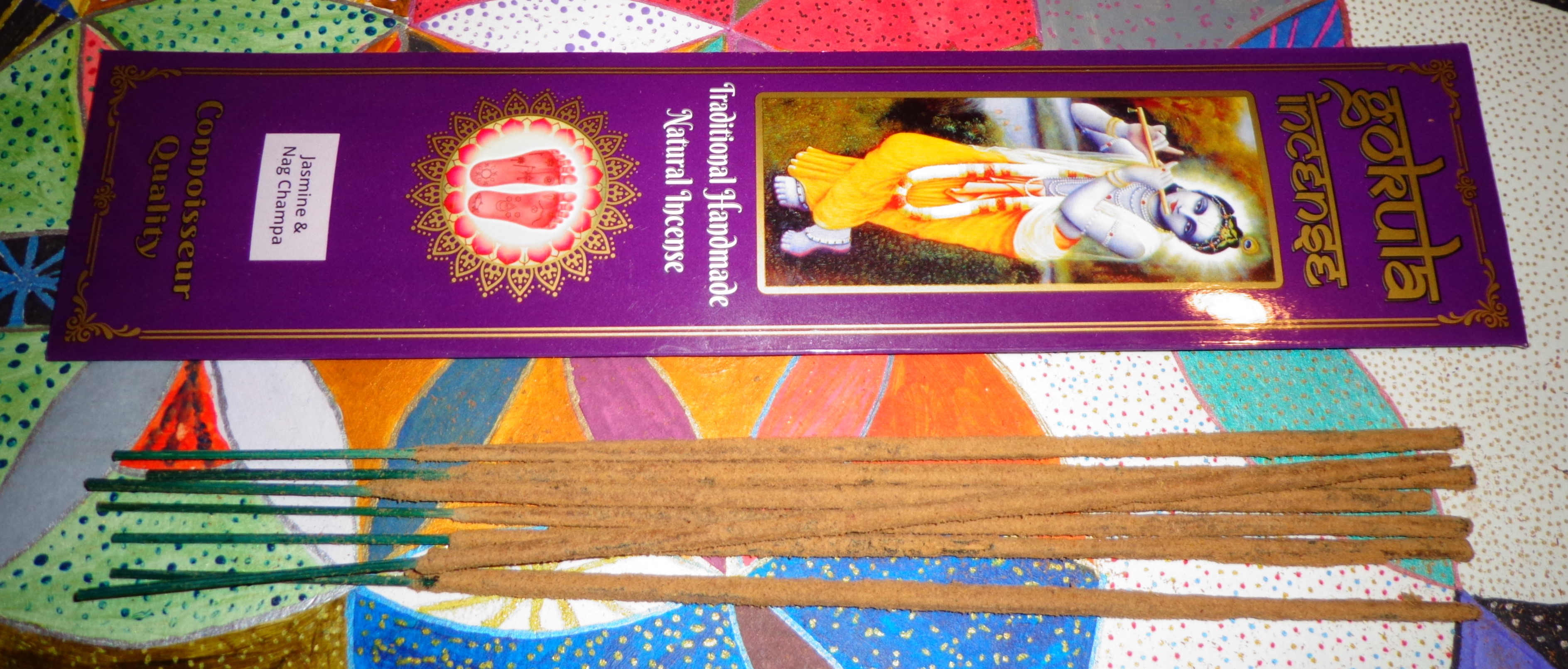 And better yet, the
And better yet, the 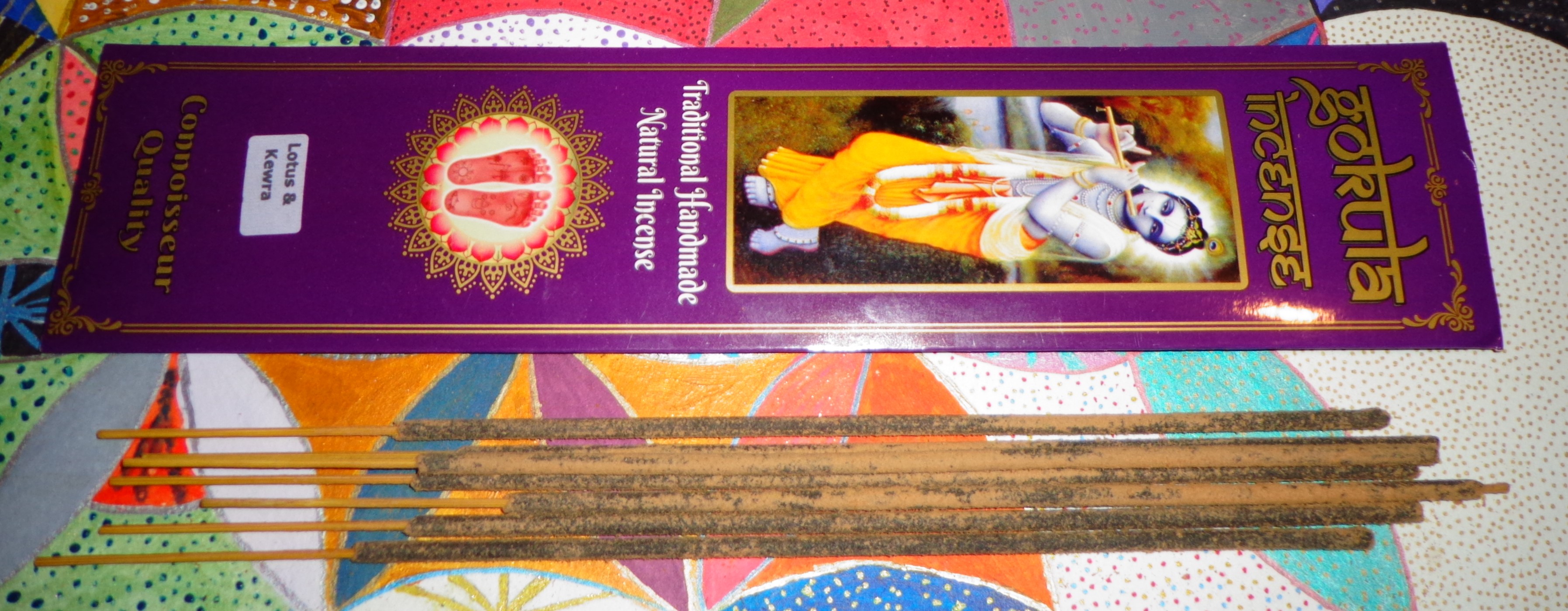 Finally the
Finally the  In addition to the range of Meena Perfume Industries incenses Everest Traders sent me, included were a varying batch of Indian scents as well as a varying batch of Bhutanese incenses, the latter of which I will cover in the next installment. The following are incenses from a number of different suppliers, some of which I don’t believe I have seen imported here, at least not often.
In addition to the range of Meena Perfume Industries incenses Everest Traders sent me, included were a varying batch of Indian scents as well as a varying batch of Bhutanese incenses, the latter of which I will cover in the next installment. The following are incenses from a number of different suppliers, some of which I don’t believe I have seen imported here, at least not often. Loban incenses are an unusual breed. As far as I’ve been able to tell loban can mean benzoin or frankincense or resin mixes and you’re not usually told which; however, I’ve tried enough Indian frankincense sticks to know most of those don’t smell like lobans. The Absolute Benzoin at Temple of Incense or the Asana Sutra from Happy Hari are examples of pure charcoal benzoins and these are a bit closer to the loban but also not exact. The TOI Big Cleansing incense is probably the closest although in this case there’s more of an herbal quality to that incense that won’t often be found in a pure loban. And the
Loban incenses are an unusual breed. As far as I’ve been able to tell loban can mean benzoin or frankincense or resin mixes and you’re not usually told which; however, I’ve tried enough Indian frankincense sticks to know most of those don’t smell like lobans. The Absolute Benzoin at Temple of Incense or the Asana Sutra from Happy Hari are examples of pure charcoal benzoins and these are a bit closer to the loban but also not exact. The TOI Big Cleansing incense is probably the closest although in this case there’s more of an herbal quality to that incense that won’t often be found in a pure loban. And the  Pradhan Perfumer’s
Pradhan Perfumer’s 
 The Sree Trading Co.s’s
The Sree Trading Co.s’s  I believe I received a sample of the Sri Aurobindo Ashram Cottage Industries
I believe I received a sample of the Sri Aurobindo Ashram Cottage Industries  The last Indian incense package I was sent was 100g of something labelled as Temple Grade Mysore Sandalwood; however, I do not detect any sandalwood, scent or otherwise, in this incense at all. For $4 for 100g batch you would basically not expect it to, but since this is an incredibly inexpensive incense I decided to just evaluate it on its own. There’s something intriguing about the incense for sure. It’s a dusted charcoal with maybe a tiny bit of softness to it. It seems sort of like a mix of a sort of sweet champa-like base with a note I remember from previous Asta Sughanda incenses from long ago, a bit like that paper meets vanilla smell, but also there’s something like a rubber tire note to it that flirts between being a kind of weird subnote and a bit too intrusive. In fact given the number of sticks in this I burned at least five before I started writing this. I would guess that the intention of this batch was to give a sandalwood note but the mix was off in some way, it’s something I think importers run into occasionally. And so there seem to be some components in the mix that are kind of interesting. But ultimately I don’t think this one works and it reminds me in ways of some accidents I’ve been able to check out.
The last Indian incense package I was sent was 100g of something labelled as Temple Grade Mysore Sandalwood; however, I do not detect any sandalwood, scent or otherwise, in this incense at all. For $4 for 100g batch you would basically not expect it to, but since this is an incredibly inexpensive incense I decided to just evaluate it on its own. There’s something intriguing about the incense for sure. It’s a dusted charcoal with maybe a tiny bit of softness to it. It seems sort of like a mix of a sort of sweet champa-like base with a note I remember from previous Asta Sughanda incenses from long ago, a bit like that paper meets vanilla smell, but also there’s something like a rubber tire note to it that flirts between being a kind of weird subnote and a bit too intrusive. In fact given the number of sticks in this I burned at least five before I started writing this. I would guess that the intention of this batch was to give a sandalwood note but the mix was off in some way, it’s something I think importers run into occasionally. And so there seem to be some components in the mix that are kind of interesting. But ultimately I don’t think this one works and it reminds me in ways of some accidents I’ve been able to check out.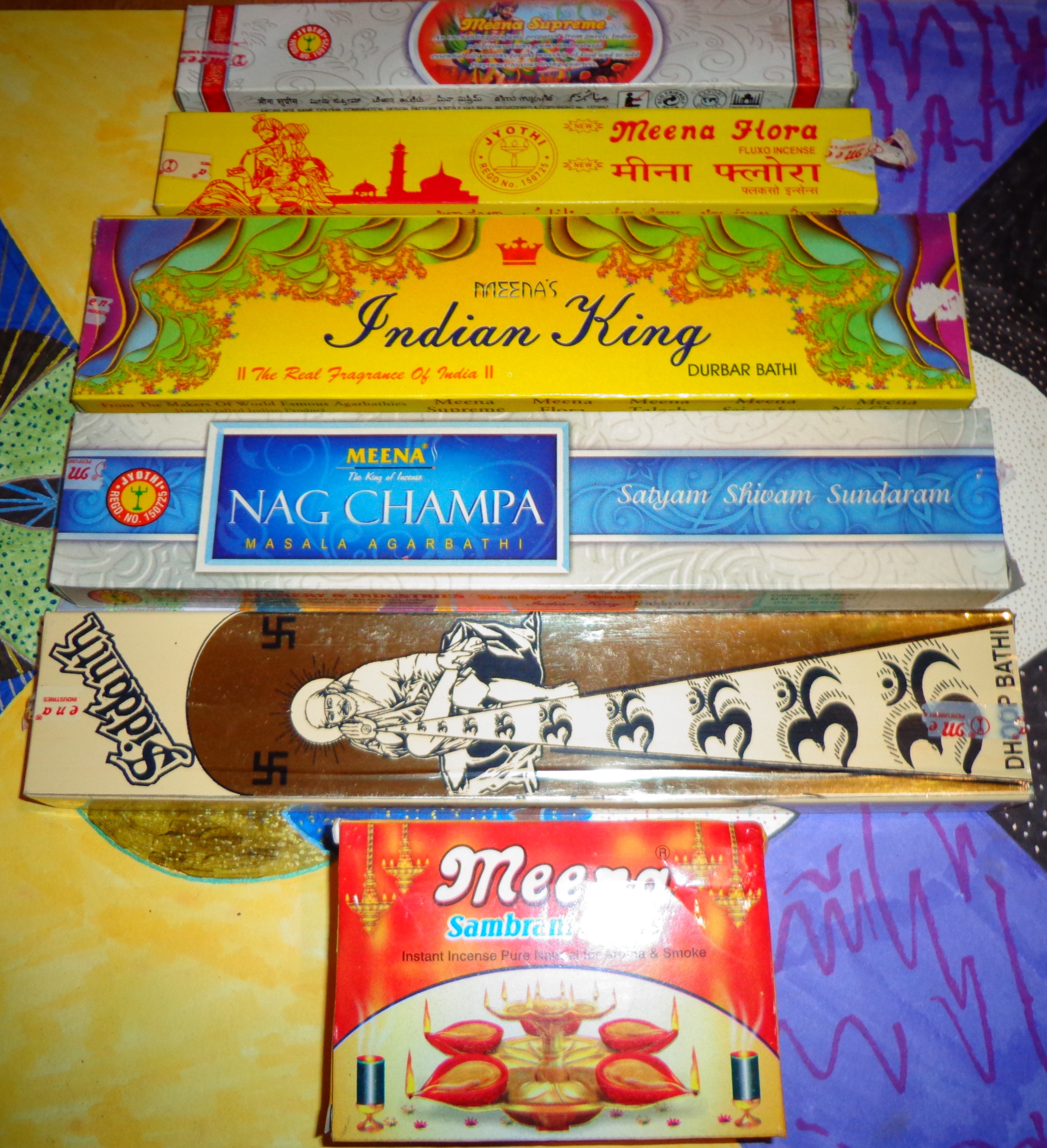 It wasn’t long ago I bought what I thought was Meena Supreme, but when I took it out, I was somewhat nonplussed. ORS has been around a while and I was originally introduced to Meena Supreme by Paul Eagle when it ended up being Happy Hari’s second incense to distribute after the Gold Nagchampa. I received a surprising number of samples at the time and some of these incenses came in Happy Hari style labels but quite a few also came in little boxes like the ones pictured here. Meena Supreme, I would guess, has to be one of the top five “name” incenses known well inside and outside India, with maybe Nag Champa and Sai Flora at the top and this one right after it. And there is a reason why, it’s a very distinctive incense, a unique combination of materials and perfumes that I reviewed way back in the day and archived on
It wasn’t long ago I bought what I thought was Meena Supreme, but when I took it out, I was somewhat nonplussed. ORS has been around a while and I was originally introduced to Meena Supreme by Paul Eagle when it ended up being Happy Hari’s second incense to distribute after the Gold Nagchampa. I received a surprising number of samples at the time and some of these incenses came in Happy Hari style labels but quite a few also came in little boxes like the ones pictured here. Meena Supreme, I would guess, has to be one of the top five “name” incenses known well inside and outside India, with maybe Nag Champa and Sai Flora at the top and this one right after it. And there is a reason why, it’s a very distinctive incense, a unique combination of materials and perfumes that I reviewed way back in the day and archived on 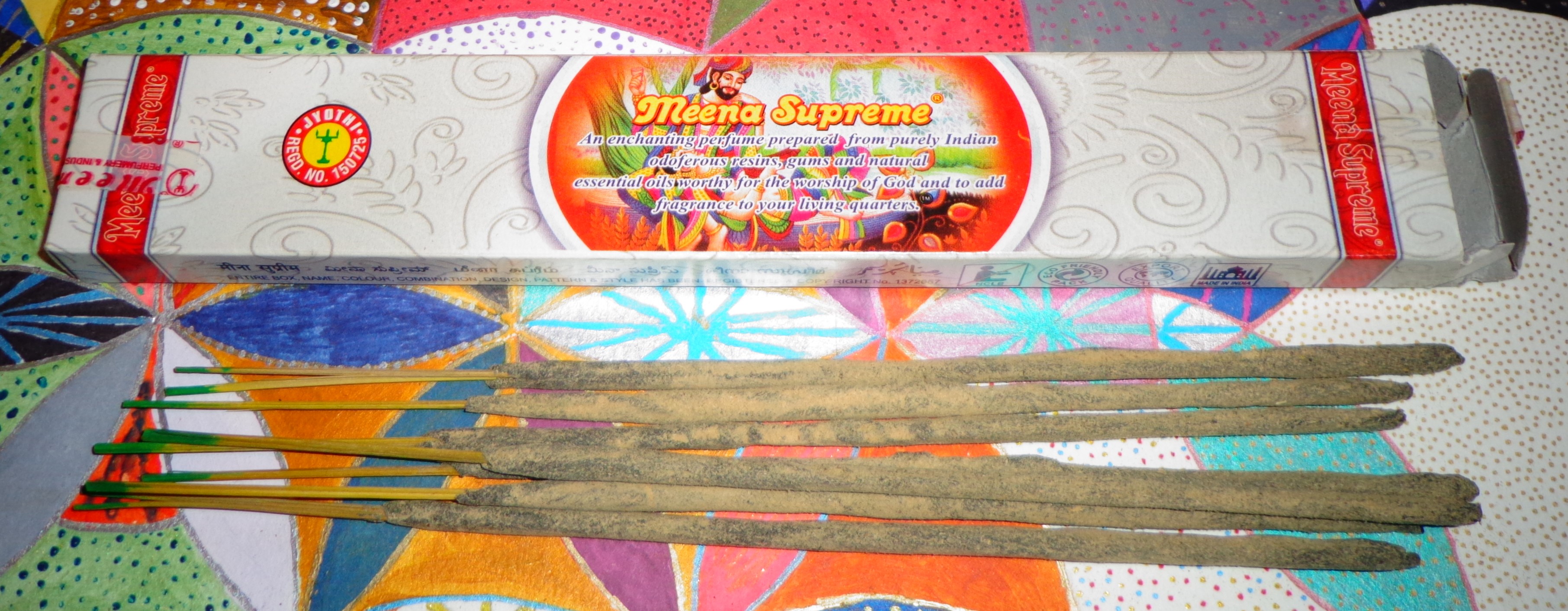 “But even if you can’t count on incense nirvana, usually something so prized is usually going to be quite good and for the most part
“But even if you can’t count on incense nirvana, usually something so prized is usually going to be quite good and for the most part 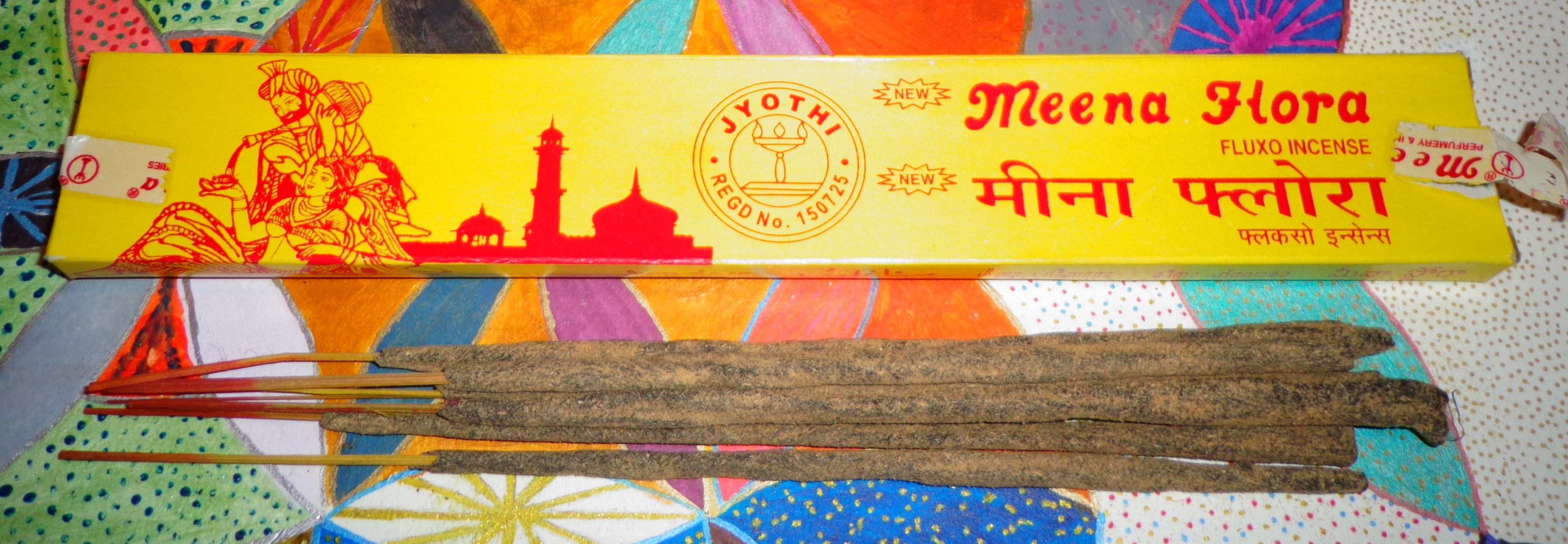 Everest Traders also sent over some other Meena Perfumery Industries incenses, which also were a lot of fun (and I would mention here the ET packaging is really nice, very cognizant of protecting all the incenses from damage). One thing I came to find out rather quickly is other than the Sambrani Stems, which I will get to last, all of the other Meena incenses share a similar base to the Supreme and share a lot of the same aromatic notes, which makes it a little harder to separate one from the other. You might want to think of these in the sense that there’s probably a top perfume mix that differs from incense to incense. So the first one of these is Meena Flora, described as a “fluxo incense.” We have, of course, reviewed several from this style over the years, the most famous being the red package Sai Flora, but we, perhaps most recently, took a look at a couple of El incenses in the same category, These are thick stick, very distinctive incenses and so you might not only consider the Meena base for the
Everest Traders also sent over some other Meena Perfumery Industries incenses, which also were a lot of fun (and I would mention here the ET packaging is really nice, very cognizant of protecting all the incenses from damage). One thing I came to find out rather quickly is other than the Sambrani Stems, which I will get to last, all of the other Meena incenses share a similar base to the Supreme and share a lot of the same aromatic notes, which makes it a little harder to separate one from the other. You might want to think of these in the sense that there’s probably a top perfume mix that differs from incense to incense. So the first one of these is Meena Flora, described as a “fluxo incense.” We have, of course, reviewed several from this style over the years, the most famous being the red package Sai Flora, but we, perhaps most recently, took a look at a couple of El incenses in the same category, These are thick stick, very distinctive incenses and so you might not only consider the Meena base for the 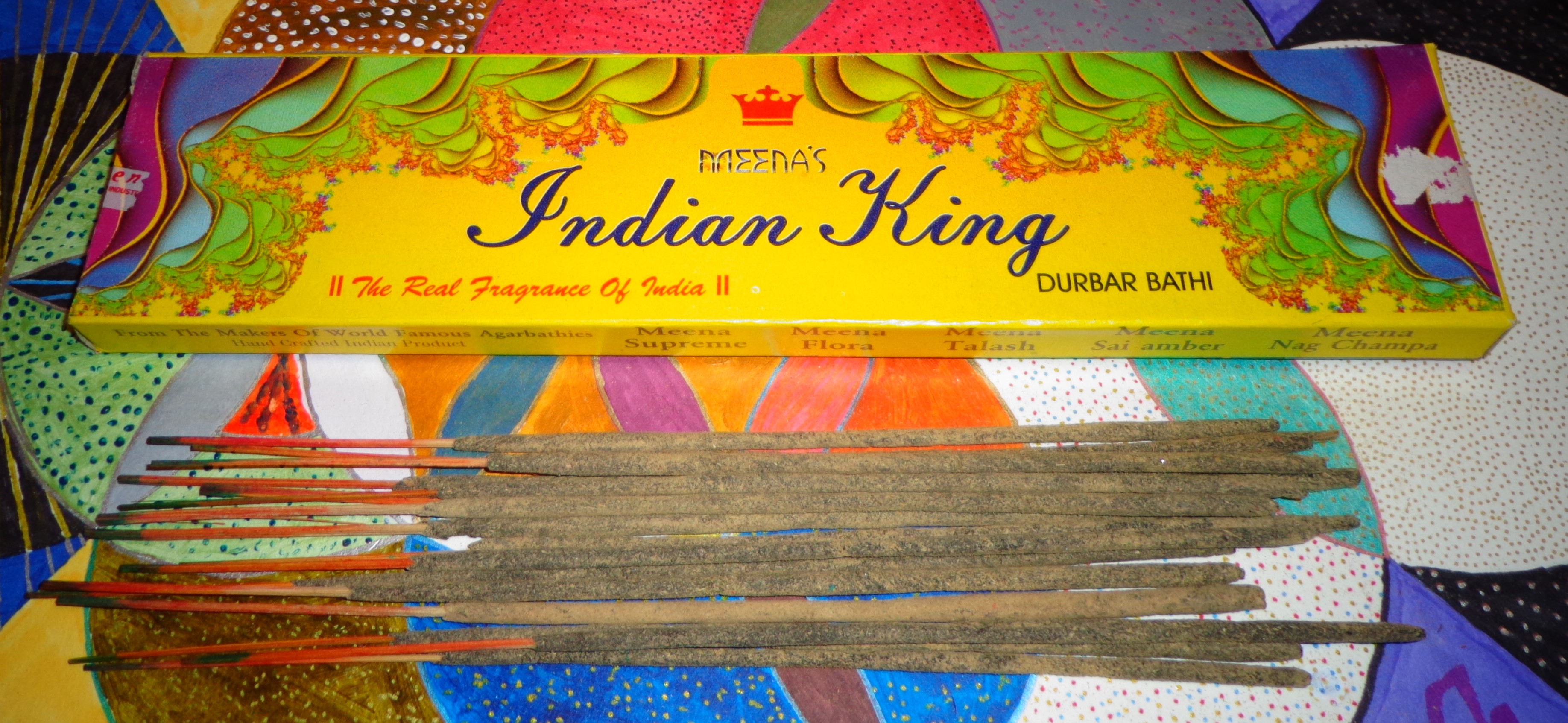 Where both the Supreme and the Flora are small 8 stick boxes, the
Where both the Supreme and the Flora are small 8 stick boxes, the 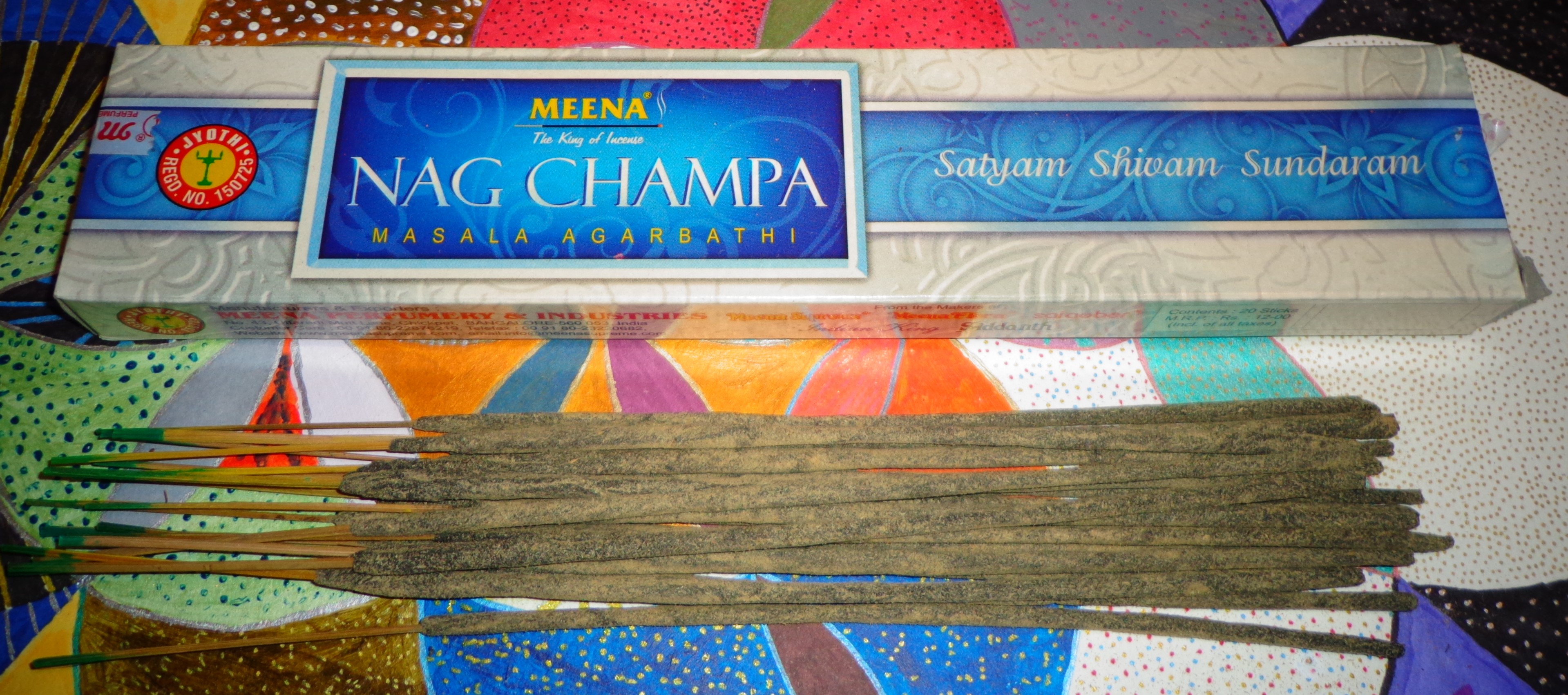 One of the reasons Indian King struck me as a champa type is because it’s not terribly far off from the
One of the reasons Indian King struck me as a champa type is because it’s not terribly far off from the 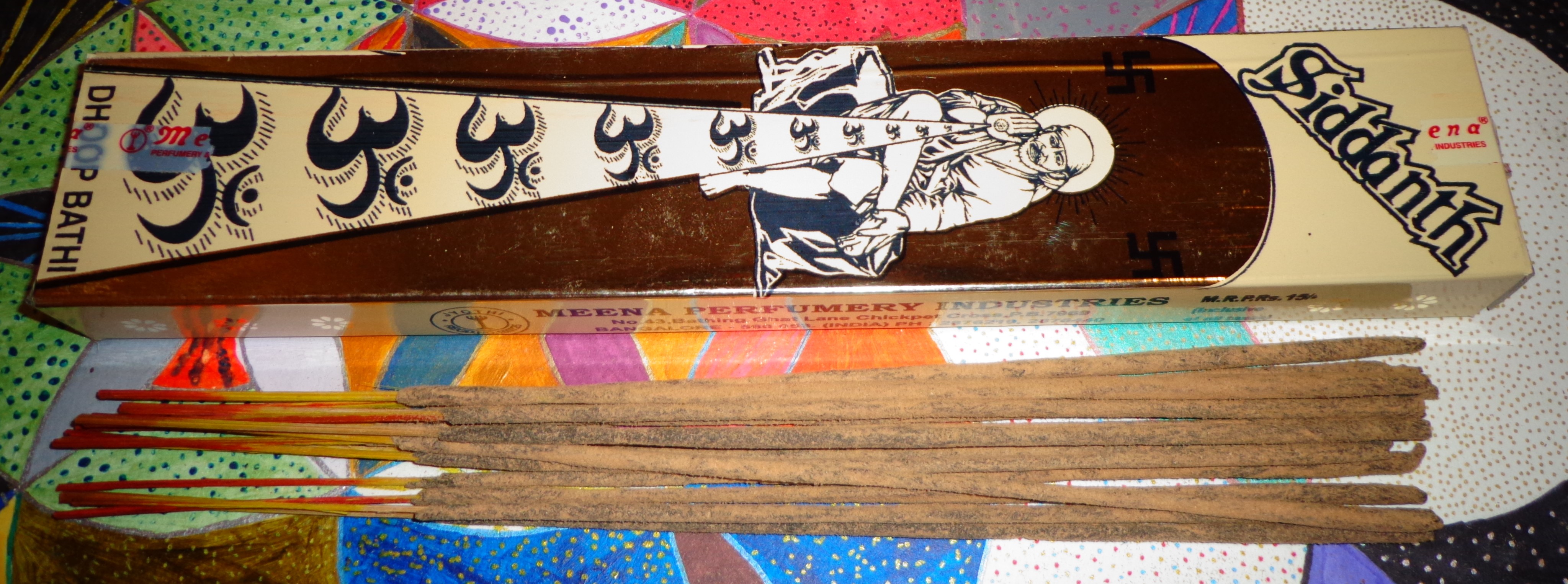 So then there’s
So then there’s 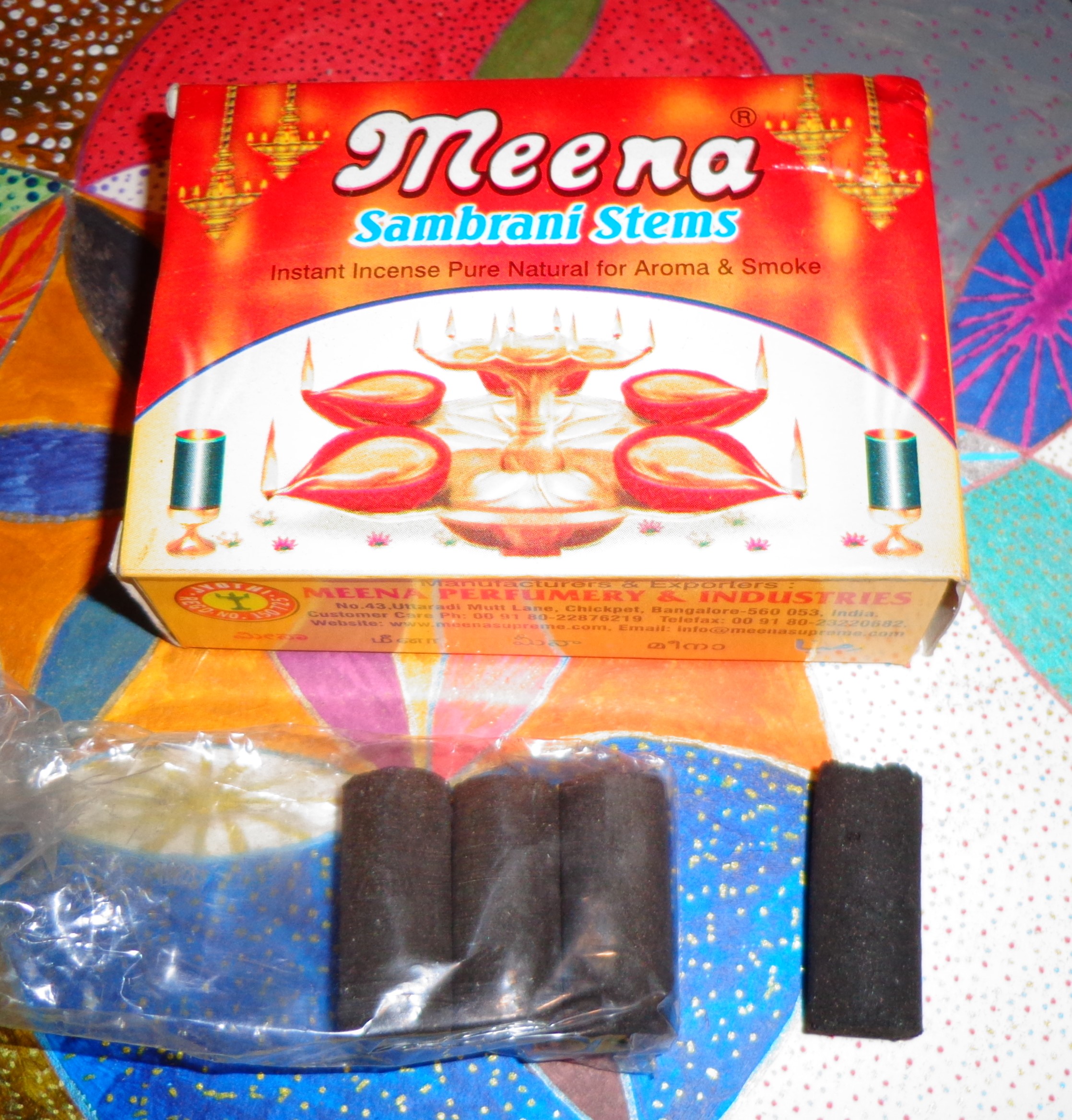 Now the
Now the
You must be logged in to post a comment.